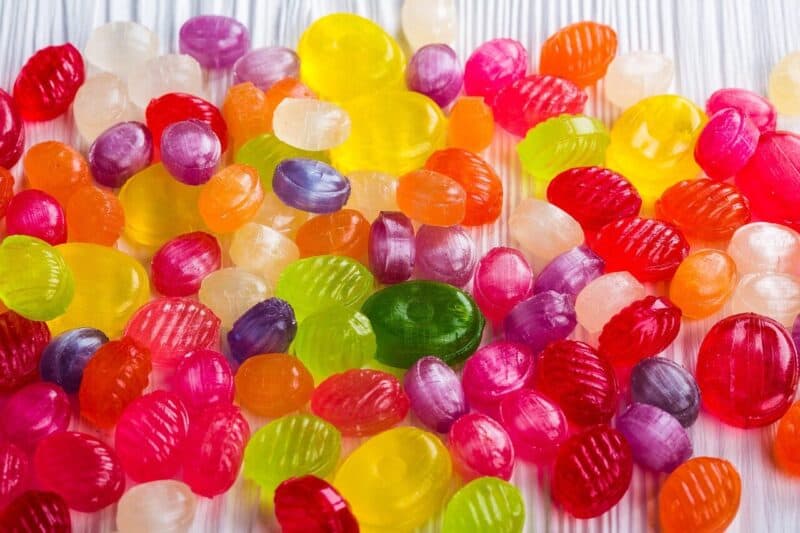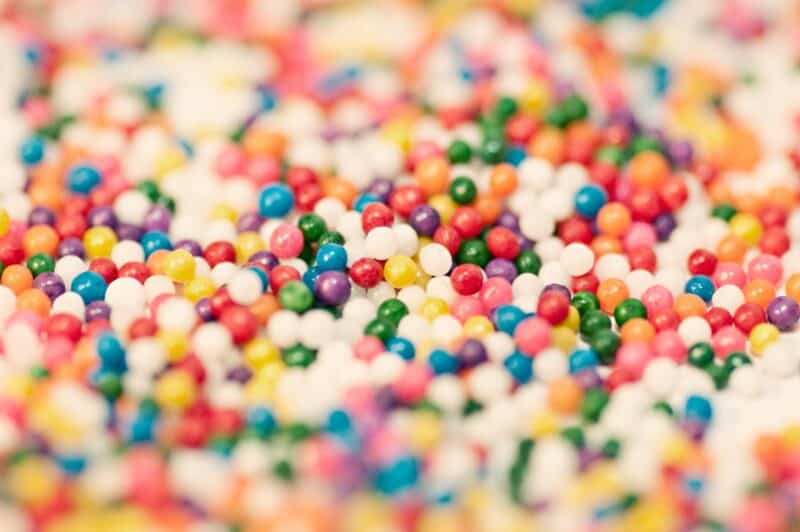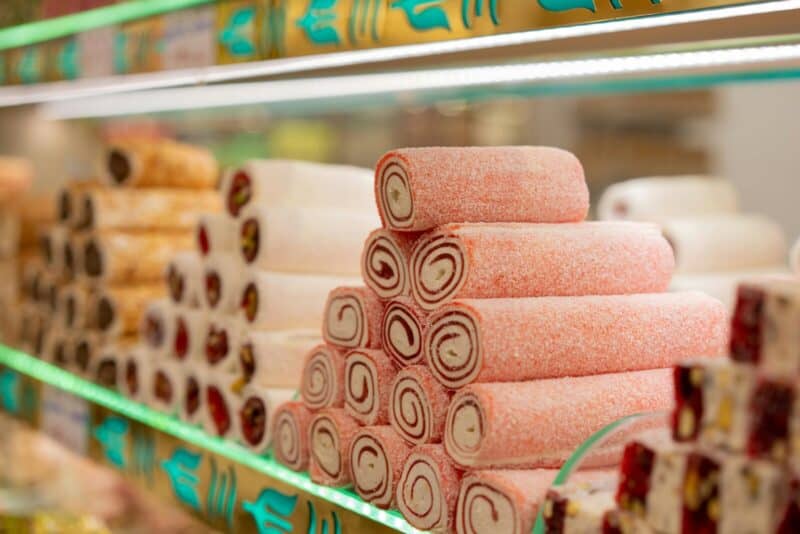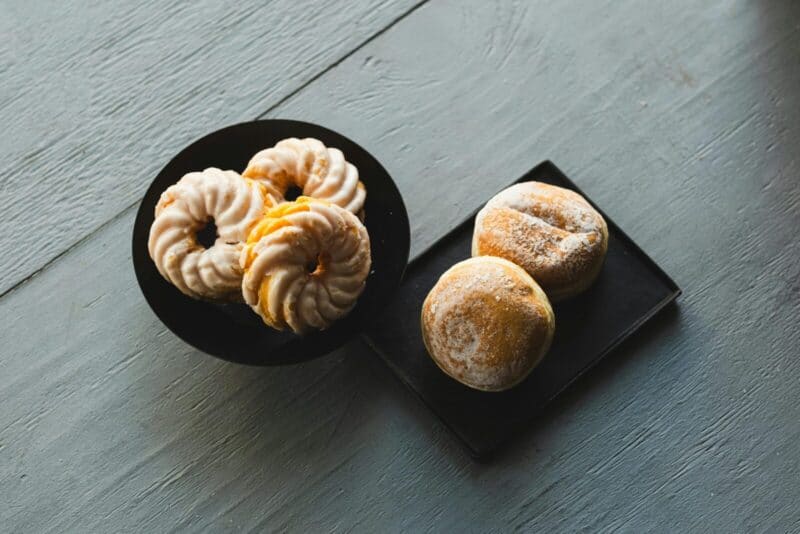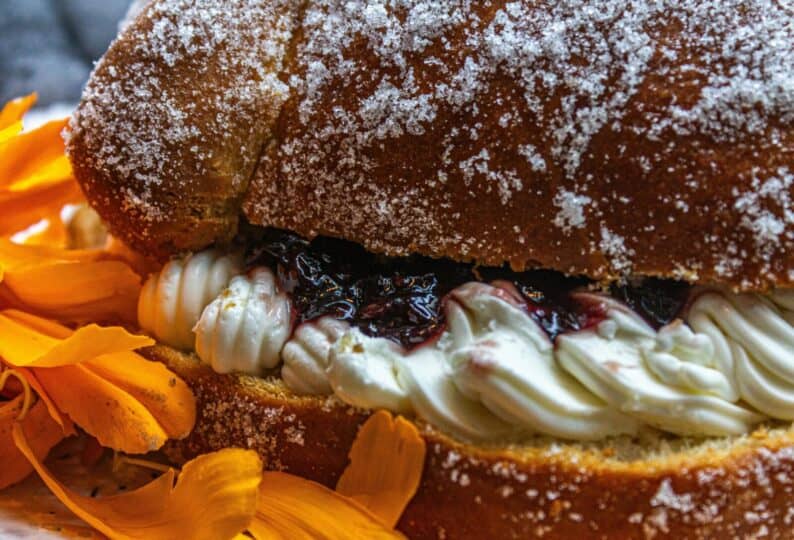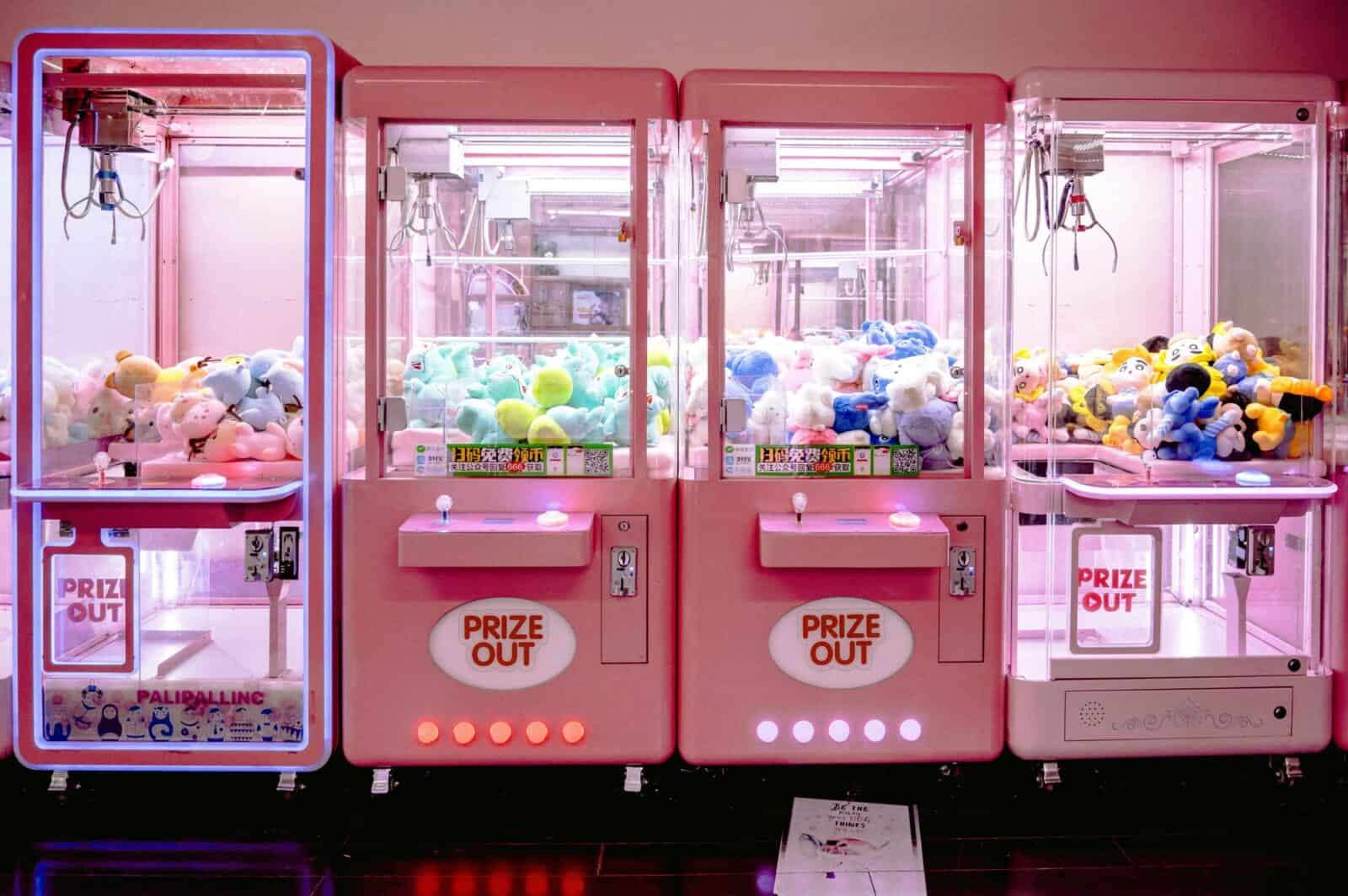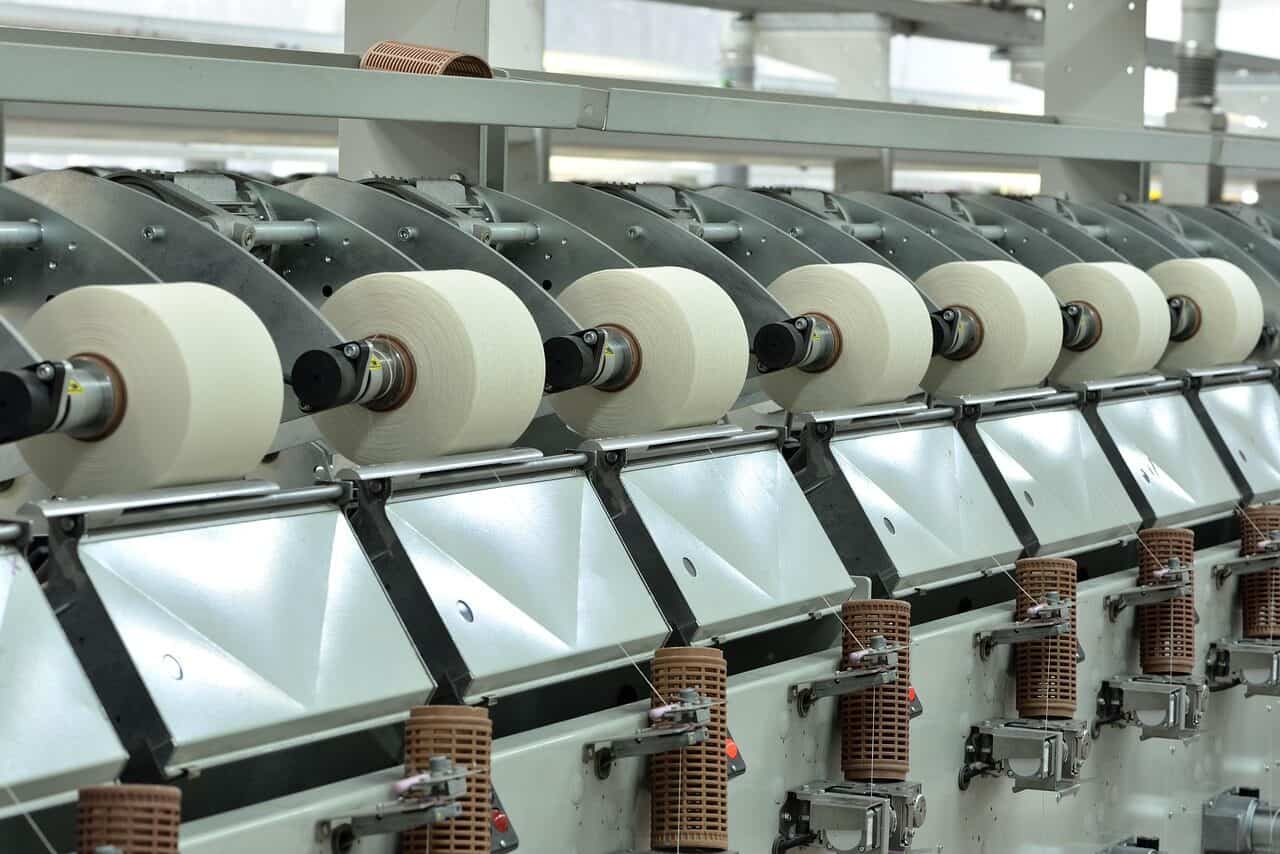Comment fabriquer des bonbons : Un guide complet de la production de confiseries à base de sucre
Qu'est-ce que la confiserie ?
Vous êtes-vous déjà demandé comment un simple grain de sucre devenait un bonbon extraordinaire ? Du claquement parfait d'une sucette à la tendre mastication d'un ourson en gélatine, cette transformation n'est pas magique. C'est un savant mélange de science, d'ingénierie et d'art. Fabrication de bonbons à partir d'ingrédients de base est un processus complexe qui nécessite une bonne compréhension de la chimie, de la physique et du fonctionnement des machines. Cet article sera votre guide complet, allant au-delà des simples recettes pour explorer la science professionnelle, les équipements importants, les étapes de fabrication et le contrôle de la qualité qui définissent la production moderne de sucreries. Nous examinerons en détail la situation pour les personnes qui souhaitent devenir fabricants de bonbons, responsables de la production et propriétaires d'entreprises agroalimentaires. Notre objectif est d'expliquer clairement le processus et de vous donner les connaissances de base nécessaires pour fabriquer des sucreries de haute qualité à grande échelle. Ce guide s'adresse aux personnes sérieuses qui cherchent à maîtriser leurs compétences.
Comment fonctionne le sucre
Pour contrôler le résultat d'un produit de confiserie, il faut d'abord comprendre les règles de base qui régissent le comportement du sucre. Cette connaissance est le ‘pourquoi’ de chaque étape de la fabrication d'un bonbon. Elle aide le fabricant à résoudre efficacement les problèmes, à créer de nouvelles recettes et à obtenir les mêmes résultats à chaque fois. La texture finale, la durée de conservation et l'aspect des bonbons dépendent tous des changements chimiques et physiques que subit le sucre pendant la cuisson. L'apprentissage de ces notions est la première étape pour devenir un véritable expert en confiserie.
Les bases de la chimie du sucre
La base de presque toutes les confiseries au sucre est le saccharose, qui est le sucre de table commun. Le saccharose est constitué de deux molécules de sucre plus simples collées l'une à l'autre : le glucose et le fructose. Lorsqu'il est chauffé avec de l'eau et un acide (comme l'acide citrique ou la crème de tartre), le saccharose subit un processus appelé inversion. Au cours de ce processus, la molécule de saccharose se décompose en glucose et en fructose. Ce mélange, appelé sucre inverti, est plus sucré que le saccharose et possède une propriété importante : il empêche la formation de gros cristaux de sucre.
Cela nous amène au concept important de la cristallisation. On parle de cristallisation lorsque les molécules de sucre s'organisent en une structure solide très ordonnée. Pour certains bonbons, comme le fudge ou le fondant, une cristallisation fine et contrôlée est nécessaire pour créer une texture douce et fondante. Pour d'autres, comme les bonbons durs, les sucettes et les gelées transparentes, la cristallisation est l'ennemi. Elle crée un produit trouble, granuleux et de mauvaise texture. Les fabricants professionnels de bonbons passent une grande partie de leur temps à aider ou, plus souvent, à empêcher la cristallisation en contrôlant soigneusement leurs recettes et leurs processus.
Température et concentration
Le facteur le plus important dans la production de sucreries est la température. La texture finale du bonbon est directement déterminée par la température la plus élevée atteinte par le sirop de sucre lors de la cuisson. À mesure que le sirop chauffe, l'eau s'évapore et la concentration en sucre augmente. Une température finale plus élevée signifie qu'il reste moins d'eau et que le produit fini est plus dur. Cette relation est exacte et reproductible.
Les professionnels mesurent la concentration en sucre à l'aide d'un réfractomètre, qui donne une lecture en degrés Brix (°Brix). Un degré Brix équivaut à 1 gramme de saccharose dans 100 grammes de solution. En surveillant à la fois la température et le degré Brix, un fabricant peut contrôler avec précision le produit final. Chaque étape de température correspond à un type de bonbon spécifique.
- Étape du fil (110-112°C / 230-234°F) : Le sirop forme un fil souple. Utilisé pour les sirops et certains glaçages.
- Stade de balle molle (112-116°C / 234-240°F) : Le sirop forme une boule molle dans l'eau froide. Utilisé pour le fudge et le fondant.
- Stade de balle ferme (118-120°C / 244-248°F) : Le sirop forme une boule ferme. Utilisé pour les caramels.
- Stade Hard Ball (121-130°C / 250-266°F) : Le sirop forme une boule dure et pliable. Utilisé pour le nougat et les guimauves.
- Stade de la fissure molle (132-143°C / 270-290°F) : Le sirop forme des fils durs mais non cassants. Utilisé pour la tire.
- Stade Hard Crack (149-154°C / 300-310°F) : Le sirop devient cassant lorsqu'il est refroidi. Utilisé pour les bonbons durs, les sucettes et les cassants.
L'action de chaque ingrédient
Un bonbon réussi est un système équilibré dans lequel chaque ingrédient joue un rôle spécifique. Il est essentiel de comprendre ces fonctions pour créer de nouveaux produits, résoudre des problèmes et améliorer la texture, la saveur et la durée de conservation. Bien que le sucre soit la vedette, d'autres ingrédients sont nécessaires pour obtenir les caractéristiques souhaitées dans les confiseries professionnelles.
Sucres et édulcorants
- Saccharose : Il s'agit du principal élément constitutif, qui confère le goût sucré et constitue la majeure partie du produit. La façon dont il se cristallise est le principal facteur à contrôler.
- Sirop de glucose / Sirop de maïs : Il s'agit de l'ingrédient “auxiliaire” le plus important. Il s'agit d'un mélange de divers hydrates de carbone qui interfèrent physiquement avec les molécules de saccharose, les empêchant de former de gros cristaux. Il contrôle également l'humidité, donne du corps et empêche le collage. L'équivalent dextrose (DE) d'un sirop de glucose indique sa douceur et sa capacité à arrêter la cristallisation.
- Sucre inversé : Mélange 50/50 de glucose et de fructose. Il attire l'eau, ce qui permet de conserver l'humidité des produits tels que les bonbons à pâte molle. Il contrôle aussi activement la cristallisation et donne une sensation plus douce dans la bouche.
Gels, graisses et émulsifiants
- Pectine, gélatine, agar-agar : Ces agents gélifiants sont responsables de la structure des gommes et des gelées. La gélatine (d'origine animale) crée une mastication élastique unique. La pectine (d'origine végétale) donne une bouchée plus courte et plus tendre, typique des gelées de fruits. L'agar-agar (provenant d'algues) crée un gel très ferme.
- Beurre, graisses végétales : les graisses sont importantes pour la saveur et la texture de produits tels que les caramels, les caramels et le fudge. Elles apportent de la richesse, agissent comme un lubrifiant pour un toucher plus doux et raccourcissent la texture.
- La lécithine : Il s'agit d'un émulsifiant, le plus souvent issu du soja ou du tournesol. Son rôle est de lier la graisse et l'eau en un mélange stable, empêchant ainsi la graisse de se séparer dans des produits tels que les caramels.
Acides, arômes et colorants
- Acide citrique, acide malique, acide tartrique : Ces acides de qualité alimentaire ont deux fonctions. Tout d'abord, ils apportent de l'acidité, ce qui équilibre le goût sucré intense du sucre. Deuxièmement, ils peuvent agir comme “agent inverseur” pendant la cuisson, en aidant à décomposer une partie du saccharose en sucre inverti pour contrôler la cristallisation.
- Arômes et colorants naturels ou artificiels : Les arômes et les couleurs définissent le caractère final du produit. Le choix entre les sources naturelles et artificielles dépend des objectifs d'étiquetage, du coût et de la stabilité. La chaleur et l'acide peuvent endommager certains colorants et arômes, c'est pourquoi le moment où ils sont ajoutés au bonbon chaud est une étape cruciale.
Matériel de production important
Le passage d'une recette de cuisine à une production commerciale nécessite un équipement spécialisé conçu pour assurer la cohérence, l'efficacité et la sécurité. Les machines utilisées dans la production de sucreries vont de dispositifs relativement simples, actionnés manuellement pour les petits ateliers, à des lignes entièrement automatisées et de grande capacité pour la fabrication industrielle. Il est essentiel de comprendre la fonction de chaque pièce d'équipement pour planifier une installation de production.
De la cuisine à l'usine
Les principes de base de la fabrication des bonbons restent les mêmes quelle que soit la taille, mais l'équipement change radicalement. Une casserole sur la cuisinière devient une marmite à vapeur. Une cuillère devient un déposeur contrôlé par ordinateur. Une plaque de marbre devient un tunnel de refroidissement multizone. Les principaux objectifs de cet équipement industriel sont d'obtenir un contrôle précis de la température et de la durée, d'assurer la cohérence d'un lot à l'autre et de maximiser le rendement tout en maintenant la qualité du produit.
Principaux équipements de fabrication
Investir dans le bon équipement est une décision cruciale pour tout fabricant de bonbons. Le choix dépend du type de produit, de la production souhaitée et du budget. Vous trouverez ci-dessous une ventilation des principales machines utilisées dans la plupart des opérations de confiserie de sucre. Les marmites de cuisson industrielles, par exemple, peuvent contenir plus de 500 litres, tandis qu'une déposeuse à grande vitesse peut produire plus de 50 000 gommes par minute, ce qui montre l'ampleur de la production moderne.
| Nom de l'équipement | Fonction | Échelle de l'opération | Critères de sélection clés |
| Bouilloire de cuisson | Cuire la masse de sucre à une température et une concentration précises. | Labo/petit et industriel | Matériau (acier inoxydable 316L), chemise de vapeur, type de mélange, contrôle de la temp. Contrôle de la température |
| Déposant | Portionner et former la masse de bonbons liquides en morceaux individuels. | Petites entreprises et entreprises industrielles | Piston vs. Servo, nombre de buses, rendement (pièces/min) |
| Ligne Mogul de l'amidon | Un système complet pour former des gommes/gelées dans des plateaux d'amidon. | Industriel | Vitesse, système de conditionnement de l'amidon, intégration informatique |
| Tunnel de refroidissement | Refroidir et fixer les bonbons formés dans un environnement contrôlé. | Petites entreprises et entreprises industrielles | Longueur, largeur de la bande, contrôle de la température et de l'humidité par zones |
| Machine à tirer | Pour ajouter de l'air à la masse des bonbons pour des produits comme la tire et certains nougats. | Petites entreprises et entreprises industrielles | Capacité (kg), vitesse du bras de traction, caractéristiques de sécurité |
| Tambour panoramique | Pour appliquer des couches (comme une coquille de sucre ou du chocolat) sur les centres. | Petites entreprises et entreprises industrielles | Contrôle de l'angle et de la vitesse du tambour, système de traitement de l'air, système de pulvérisation de l'enduit |
Le processus de fabrication
Si chaque bonbon a ses particularités, la production de la plupart des sucreries repose sur un processus universel, étape par étape. La maîtrise de cette séquence et la compréhension des points de contrôle critiques de chaque étape constituent l'essence même de la fabrication professionnelle. Ce diagramme de processus fournit un cadre pour la création de produits cohérents et de haute qualité à grande échelle.
Étape 1 : Recette et pré-mélange
C'est l'étape du plan. Elle commence par une recette précise et testée, souvent appelée “formule” dans un contexte commercial. Tous les ingrédients doivent être pesés avec précision à l'aide d'une balance calibrée - il n'y a pas de place pour les mesures à la tasse ou à la cuillère dans une production professionnelle. Les ingrédients secs sont souvent prémélangés pour garantir une répartition uniforme. Les ingrédients humides, comme l'eau, le sirop de glucose et le saccharose, sont ajoutés à la marmite dans un ordre précis, conformément aux instructions de la formule, afin de garantir une bonne dissolution.
Étape 2 : Cuisson de la masse de sucre
Il s'agit sans doute de l'étape la plus critique de tout le processus. Le mélange est chauffé dans une marmite de cuisson, généralement un récipient à enveloppe de vapeur qui fournit une chaleur uniforme et contrôlable. La vitesse de chauffage doit être gérée de manière à ce que tout le sucre se dissolve avant que le point d'ébullition ne soit atteint. Au fur et à mesure de la cuisson du sirop, l'eau s'évapore, la température et la concentration en sucre (Brix) augmentent. Le cuisinier doit surveiller ces deux variables en permanence jusqu'à ce que le point d'ébullition soit atteint. Nous partageons avec vous un conseil issu de nos années d'expérience : Utilisez toujours un thermomètre à sonde numérique calibré et un réfractomètre pour cette étape. Se fier à des repères visuels ou à des outils non calibrés est une erreur courante chez les débutants, qui se traduit par des lots incohérents, des déchets et de la frustration.
Étape 3 : Ajout des ingrédients secondaires
Une fois que la masse de sucre a atteint sa température cible, elle est souvent retirée du feu. C'est à ce moment-là que les ingrédients sensibles à la chaleur sont ajoutés. Les arômes, les couleurs et les acides sont généralement mélangés au cours de cette phase de refroidissement. Si on les ajoute trop tôt, lorsque la masse est à sa température maximale, les arômes risquent de s'évaporer, les couleurs de brûler ou de changer de teinte et les acides de provoquer une inversion excessive et incontrôlée du sucre. Le mélange doit se faire rapidement et minutieusement pour assurer une répartition homogène sans abaisser de manière significative la température de la masse avant sa formation.
Étape 4 : Formation et dépôt
Une fois la masse de bonbons cuite et aromatisée, il faut lui donner sa forme définitive avant qu'elle ne durcisse. La méthode dépend entièrement du type de produit :
- Dépôt d'amidon Mogul : La norme pour les gommes, les gelées et les crèmes. Le liquide Les bonbons sont déposés dans les empreintes réalisées dans des plateaux d'amidon de maïs conditionné. L'amidon absorbe l'humidité et maintient la forme de la pièce pendant qu'elle durcit.
- Formage de plaques : Utilisé pour les bonbons durs, les cassants et certains caramels. La masse chaude est versée sur une table de refroidissement à température contrôlée et étalée en une feuille d'épaisseur uniforme. Elle est ensuite découpée ou rainurée avant de durcir complètement.
- Dépôt dans des moules : les bonbons durs et les sucettes sont souvent déposés directement dans des moules en métal ou en silicone.
- Extrusion : Utilisée pour la réglisse et certains bonbons à mâcher. La masse du bonbon est forcée à travers une filière pour créer une corde continue, qui est ensuite coupée à la longueur voulue.
Étape 5 : Refroidissement et conditionnement
Après le formage, les bonbons doivent être refroidis et conditionnés pour obtenir leur texture et leur stabilité finales. Cette opération s'effectue généralement dans un tunnel de refroidissement, qui fournit un flux contrôlé d'air froid, souvent déshumidifié. Le profil de refroidissement (la vitesse à laquelle la température est abaissée) est essentiel. S'il est refroidi trop rapidement, des tensions internes peuvent s'accumuler dans les bonbons durs et les faire craquer. Les gommes et les gelées nécessitent un temps spécifique dans une “salle de conditionnement” à température et humidité contrôlées pour permettre à l'agent gélifiant de prendre complètement et d'atteindre le taux d'humidité correct.
Étape 6 : Finition et emballage
Il s'agit de l'étape finale avant que le produit ne soit prêt pour le consommateur. Les processus de finition peuvent inclure
- Sablage : Le fait de jeter des gelées ou des sauces dans du sucre ou un mélange de sucre et d'acide.
- Huile : Enduire légèrement les gommes d'une huile de qualité alimentaire pour éviter qu'elles ne collent entre elles.
- Panner : La formation d'une coquille de sucre dur sur un centre, comme dans le cas des brisures de mâchoires ou des noix enrobées de bonbons.
L'emballage n'est pas seulement une question de marketing ; c'est un élément essentiel de la durée de conservation. Le matériau d'emballage doit constituer une barrière contre l'humidité, qui est le principal ennemi de la plupart des confiseries à base de sucre, en particulier les bonbons durs.
Contrôle de la qualité et résolution des problèmes
Le maintien d'une qualité constante est ce qui distingue un fabricant professionnel d'un amateur. Cela nécessite une approche systématique du contrôle de l'ensemble du processus de production, des matières premières au produit fini. Un solide programme de contrôle de la qualité (CQ), associé aux connaissances nécessaires pour résoudre les problèmes courants, permet d'économiser de l'argent, de réduire les déchets et d'asseoir la réputation d'excellence d'une marque.
Mise en place d'un programme de contrôle de qualité
Une activité professionnelle repose sur le contrôle des données et des processus. Cela commence par la mise en œuvre de bonnes pratiques de fabrication (BPF) et inclut souvent un plan d'analyse des risques et de maîtrise des points critiques (HACCP). Les principaux points de contrôle du contrôle qualité sont les suivants
- Inspection des matières premières : Vérifier que tous les ingrédients entrants sont conformes aux spécifications (par exemple, le DE correct du sirop de glucose, la force d'efflorescence appropriée de la gélatine).
- Surveillance en cours de processus : Suivi continu des points de contrôle critiques tels que la température de cuisson, le degré Brix, le pH et les poids de dépose. C'est là que les instruments calibrés sont essentiels.
- Test du produit final : Évaluation du produit fini par rapport à une norme établie. Cela comprend l'analyse sensorielle (goût, texture, apparence), l'analyse de la teneur en eau et la mesure de l'activité de l'eau (aw) pour vérifier la stabilité de la conservation.
Problèmes de production courants
Même dans les installations les mieux gérées, des problèmes surviennent. L'essentiel est de pouvoir diagnostiquer rapidement la cause et de mettre en œuvre une solution. Le tableau suivant présente quelques-uns des problèmes les plus courants rencontrés dans la production de sucreries.
| Problème | Cause(s) potentielle(s) | Solution(s) professionnelle(s) |
| Bonbons durs granuleux ou troubles | Cristallisation précoce. Pas assez d“”ingrédient auxiliaire". Remuer après la cuisson. | Augmenter la quantité de sirop de glucose dans la formule. S'assurer que tout le sucre est dissous avant l'ébullition. Éviter de remuer la masse une fois qu'elle a atteint la température. Ajouter de l'acide en fin de cuisson. |
| Gommes ou gelées collantes | Solides finaux (Brix) incorrects. Humidité élevée dans la salle de production ou de conditionnement. | Cuire pour obtenir un degré Brix final plus élevé. Installer des systèmes de déshumidification pour maintenir l'humidité relative en dessous de 50%. Vérifier la concentration et l'hydratation de l'agent gélifiant. |
| Caramel est trop doux/rond | Cuisson à trop basse température. Mauvais rapport entre le sucre et les matières grasses/laitages. | Recalibrer les thermomètres et cuire jusqu'au stade de la boule ferme (118-120°C). Vérifier à nouveau la formule et le poids des ingrédients. |
| Poids des pièces incohérent | Colmatage des buses de dépose. Variations de l'épaisseur de la masse de bonbons dues à des changements de température. | Mettre en place un programme de nettoyage régulier de la machine à déposer. Veiller à ce que la trémie du déposeur et la masse de bonbons soient maintenues à une température constante. |
| Aspect terne des bonbons enrobés | Mauvaise concentration de sirop. Mauvais séchage entre les couches. Mauvaise humidité dans le bac. | Ajuster le degré Brix du sirop pour chaque étape de panification. Assurer un temps de séchage et un flux d'air adéquats. Contrôler la température et l'humidité de l'air alimentant la cuvette. |
Applications industrielles
La science de la confiserie de sucre va bien au-delà du rayon des bonbons. Les principes de contrôle de la cristallisation du sucre, de la texture et de l'humidité sont fondamentaux pour de nombreux secteurs de l'industrie alimentaire et pharmaceutique. La compréhension de ces applications peut ouvrir de nouveaux marchés et des possibilités de diversification des produits pour un fabricant.
Au-delà de l'allée des bonbons
- Produits pharmaceutiques : La technologie utilisée pour fabriquer des bonbons durs est directement appliquée à la production de pastilles médicamenteuses et de pastilles contre la toux. La matrice de sucre vitreuse est un excellent support pour les ingrédients pharmaceutiques actifs (IPA). De même, la technologie de production des gommes est aujourd'hui la principale plate-forme de fabrication de vitamines et de compléments alimentaires sous forme de gommes à mâcher.
- Boulangerie et pâtisserie : Les techniques de confiserie sont essentielles pour créer une large gamme de composants de boulangerie. Cela comprend les glaçages au sucre stable pour les beignets, le travail décoratif du sucre, les garnitures pour les gâteaux et les pâtisseries, et les inclusions telles que les morceaux de caramel pour les biscuits et la crème glacée.
- Industrie des boissons : La production de sirops de sucre concentrés et de longue conservation pour les cafés, les bars (sirops de cocktail) et la fabrication de sodas est une application directe des principes de base de la cuisson du sucre.
- Produits de santé : Le marché des “aliments fonctionnels” est en plein essor, avec une forte demande de gommes fonctionnelles. Ces les produits utilisent des processus de fabrication gommeux pour fournir des ingrédients comme le CBD, le collagène, les fibres, la mélatonine et d'autres vitamines et minéraux dans un format savoureux.
Tendances futures de l'industrie
L'industrie de la confiserie est dynamique et évolue constamment en réponse aux demandes des consommateurs, aux avancées technologiques et aux changements réglementaires. Il est essentiel de garder une longueur d'avance sur ces tendances pour réussir à long terme. Un fabricant tourné vers l'avenir considère ces changements non pas comme des défis, mais comme des opportunités d'innovation.
L'évolution du monde des sucreries
Le consommateur moderne est plus que jamais soucieux de sa santé et attentif aux étiquettes. Cela entraîne des changements importants dans la formulation et l'approvisionnement des produits.
- Sucre réduit et “meilleur pour la santé” : Il s'agit de la tendance la plus importante. Le marché mondial des confiseries à faible teneur en sucre connaît une forte croissance. Il s'agit de remplacer le saccharose par des édulcorants alternatifs tels que l'allulose, l'érythritol et la stévia. Ces alternatives posent des problèmes de production, car elles ont des points de fusion, une solubilité et des réactions de brunissement différents de ceux du saccharose, ce qui nécessite une reformulation en profondeur.
- Formulations à base de plantes et végétaliennes : Le marché s'éloigne fortement des ingrédients d'origine animale. Pour les gommes, cela signifie qu'il faut remplacer la gélatine traditionnelle par des gélifiants d'origine végétale tels que la pectine, la carraghénine et l'agar-agar. Ce changement nécessite des ajustements au niveau de la transformation, car ces gélifiants ont des températures de prise et des exigences de pH différentes.
- L'automatisation et l“”industrie 4.0" : Pour améliorer l'efficacité et la cohérence, les usines adoptent de plus en plus l'automatisation. Cela inclut le dépôt et l'emballage robotisés, ainsi que l'utilisation de capteurs intégrés pour surveiller la température, le Brix et le pH en temps réel. Ces données sont ensuite utilisées pour auto-corriger le processus, minimisant ainsi l'erreur humaine.
- Approvisionnement durable et éthique : Les consommateurs exigent la transparence dans la chaîne d'approvisionnement. La pression exercée sur les fabricants pour qu'ils s'approvisionnent en ingrédients tels que le sucre, le cacao et l'huile de palme auprès de sources certifiées durables et équitables s'accroît.
L'avenir des arômes et des formes
Au-delà des tendances en matière de santé, l'innovation en matière d'expérience sensorielle continue d'être un moteur. Le tableau ci-dessous présente les principales tendances et leur impact direct sur le processus de production.
| Tendance | Ingrédient clé / technologie | Impact sur le processus de production |
| Sucre réduit | Allulose, stévia, fruits de moine, fibres de maïs solubles | Nécessite une reformulation complète pour gérer la texture, le brunissement et le profil sucré. Peut nécessiter des températures de cuisson différentes. |
| Gommes végétaliennes | Pectine, Agar-Agar, Carraghénane | Différents mécanismes de gélification et temps de prise. La pectine nécessite un contrôle précis du pH pour la gélification. |
| Ingrédients fonctionnels | Vitamines, minéraux, CBD, collagène | Possibilité d'interaction avec d'autres ingrédients. La sensibilité à la chaleur ou au pH peut nécessiter un ajout en fin de processus. |
| Arômes exotiques/complexes | Extraits botaniques, chili, mélanges d'épices mondiaux | La stabilité à des températures élevées et dans des environnements acides doit être testée. Peut nécessiter des agents de masquage des arômes. |
Maîtriser l'art et la science
La réussite dans la production de sucreries est un voyage d'apprentissage continu. Nous sommes passés de la science fondamentale de la chimie du sucre aux détails des machines industrielles et de l'assurance qualité. Ce guide a établi une feuille de route essentielle : commencer par une compréhension approfondie de la science du sucre, sélectionner les ingrédients et l'équipement adéquats, maîtriser le processus de fabrication étape par étape et, enfin, garantir l'excellence grâce à un contrôle de qualité rigoureux.
Le monde de la confiserie de sucre est un mariage parfait entre la précision technique et l'expression créative. En combinant les connaissances scientifiques et techniques décrites ici avec une passion pour les saveurs et les formes, les fabricants peuvent aller au-delà de la simple fabrication de bonbons. Ils peuvent innover, résoudre des problèmes et créer constamment des produits qui ravissent les consommateurs. Cette maîtrise de l'art et de la science est la véritable clé de la réussite et de la pérennité de l'industrie de la confiserie.
Foire aux questions (FAQ)
Quelle est l'humidité idéale pour une salle de production de bonbons ?
Pour la plupart des sucreries, en particulier les bonbons durs, un faible taux d'humidité est essentiel. L'environnement idéal se situe généralement en dessous de 50% d'humidité relative (RH), 40% étant un objectif encore meilleur. Une humidité élevée rend les produits qui attirent l'eau, comme les bonbons durs, collants et leur fait perdre leur qualité et leur durée de conservation.
Comment puis-je mesurer avec précision la température d'un petit lot de bonbons ?
Pour un travail professionnel, même à petite échelle, un thermomètre à sonde numérique de haute qualité et à lecture rapide est essentiel. Ces thermomètres fournissent des mesures rapides et précises et peuvent être facilement étalonnés. Il est déconseillé de se fier aux thermomètres analogiques traditionnels pour bonbons ou aux thermomètres infrarouges à pistolet (qui ne mesurent que la température de surface) pour un contrôle précis du processus.
Quelle est la différence entre un “agent auxiliaire” et un “agent gélifiant” ?
Ils remplissent des fonctions très différentes. Un agent auxiliaire, comme le sirop de glucose ou le sucre inverti, est utilisé pour contrôler ou empêcher la cristallisation du saccharose. Il “aide” le sirop à rester lisse. Un agent gélifiant, comme la pectine, la gélatine ou l'agar-agar, est utilisé pour apporter structure et texture. C'est ce qui donne à un chewing-gum sa mâche ou à une gelée sa forme tranchable.
Comment calculer la durée de conservation de mes sucreries ?
Le principal facteur déterminant La durée de conservation est la durée de vie du produit. “L'activité de l'eau” (aw), et pas seulement la teneur en eau. L'activité de l'eau mesure la quantité d'eau “libre” disponible pour la croissance microbienne. Les bonbons durs ont une activité hydrique très faible (généralement <0,3), ce qui leur confère une durée de conservation d'un an ou plus. Les gommes ont une aw plus élevée (~0,6-0,75), ce qui les rend plus sensibles à l'altération et exige une formulation et un conditionnement très soignés pour garantir leur stabilité dans le temps. Une durée de conservation précise est déterminée par des tests de stabilité formels.
Association nationale des confiseurs (NCA) https://candyusa.com/
Association professionnelle des confiseurs (PMCA) https://pmca.com/
Association américaine des technologues en confiserie (AACT) https://www.aactcandy.org/
Institut des technologues de l'alimentation (IFT) https://www.ift.org/
Association internationale de la confiserie (ICA) https://www.international-confectionery.org/
ScienceDirect - Recherche sur la confiserie de sucre https://www.sciencedirect.com/topics/food-science/sugar-confectionery
Magazine Candy Industry https://www.candyindustry.com/
Fabrication de la revue Confectioner Journal https://gomc.com/
Food Technology Magazine - Publication de l'IFT https://www.ift.org/news-and-publications/food-technology-magazine
GM Insights - Analyse du marché de la confiserie de sucre https://www.gminsights.com/industry-analysis/sugar-confectionery-market

